Halley's Comet
Contents
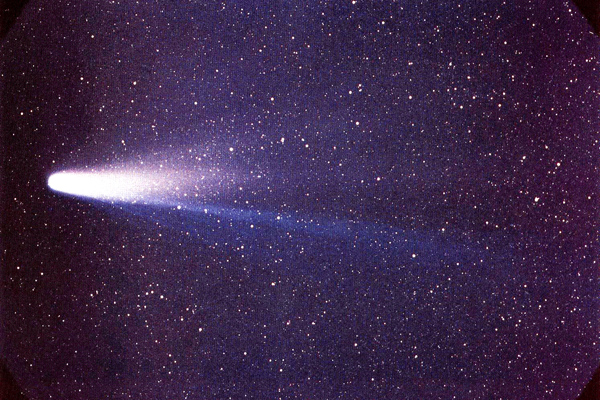 Halley's Comet on 8 March 1986 / nasa.gov
Halley's Comet on 8 March 1986 / nasa.govThe world's most renown comet Halley visits us every 75 years making it a short period or periodic comet (seen periodically less than 200 years) and its passing recorded in texts since 239 B.C. by ancient astronomers around the world. Its original pronunciation is hal-lee, similar to valley, but many have adopted the other pronunciation of hey-lee, similar to daily.
History
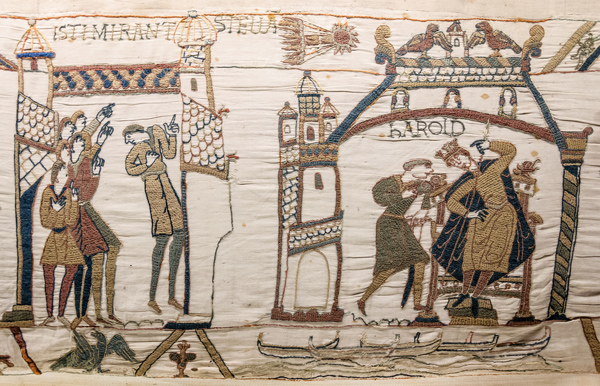 The Halley's comet on Bayeux Tapestry, made in the 1070s / wikimedia.org
The Halley's comet on Bayeux Tapestry, made in the 1070s / wikimedia.orgThe Chinese were the first to record this periodic (returns regularly) comet and is found in the Shih Chi and Wen-Hsien Thung Khan Chronicles. Halley's mentioned again in 164 B.C. and 87 B.C. by the Babylonian astronomer/priest and was thought of as omens of things to come. Just before William the Conqueror lead his invasion into England, Duke William II of Normandy took the sighting of the comet as a sign of his impending success as seen in the Bayeux Tapestry commemorating this event. However, no one realized that this was the same comet reappearing through history, until Edward Halley.
1531, 1607, and 1682, Edward Halley observed the information of three comets that approached near Earth during those years and discovered that in fact, it was not three comets but the same comet. He predicted that the comet would return in 1758, but did not live to see its return. As his prediction was correct and the evidence he reported strongly supported his theory, the comet received his name. This prompted other scientist to take closer looks at comet sightings in the past to find which ones were sightings of the same comets, some of which were Halley.
Orbital Path
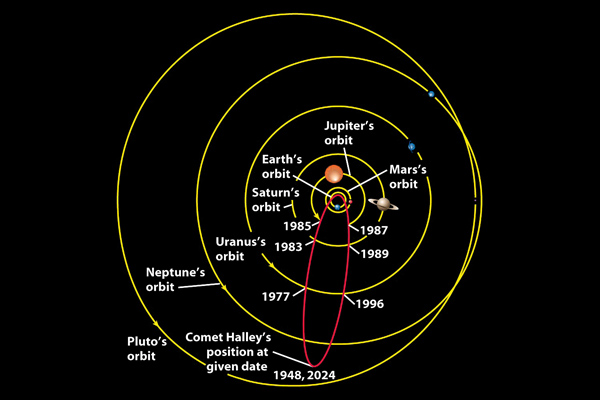 Halley's Comet orbit / nasa.gov
Halley's Comet orbit / nasa.govHalley orbits the sun at an extreme elliptical path with its eccentricity at 0.967. Its orbit is in the opposite direction and its inclination is at 18. At its perihelion, it comes within 88 million km (55 million miles) of the sun and at its aphelion its distance is about 5.2 billion km (3.2 billion miles), which is well beyond Pluto somewhere in the Kuiper Belt. It is during its approach into perihelion that Halley's comet is most visible to us on Earth. Halley's last passing was in March of 1986 where the space crafts Giotto and Vega were given a chance to view Halley closer, the comet is not due back in our neighborhood until sometime in mid-2061.
Composition
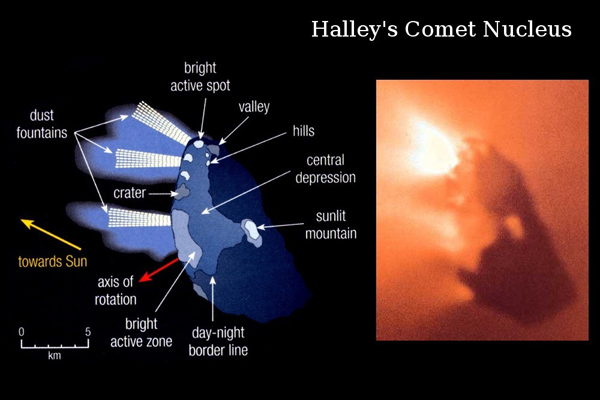 Halley's Comet Nucleus / virginia.edu
Halley's Comet Nucleus / virginia.eduAs Halley nears the sun, its composition becomes clearer and easier to detect. A coma (aka atmosphere) forms from lighter elements such as water, carbon monoxide, carbon dioxide, and various ices from the surface of its nucleus due to warming from the sun and is typically 100,000 km (62,137 miles) across. As it returns to its aphelion, these gasses begin to freeze and fall back down on the nucleus and the comet appears like a hunk of rock. It is strongly believed that it, along with many of the periodic comets, from the Oort Cloud in the far reaches of the Kuiper Belt.
Despite the size of its coma, its nucleus is rather small at 15 km (9.3 miles) long, 8 km (4.9 miles) wide, and 8 km (4.9 miles) thick and it resembles the shape of a peanut, so you can basically walk across Halley in roughly 4 hours. In March of 1986, its tail measured up to 50 million km (31 million miles) from the coma of the comet. When viewing any comet from Earth, it is the coma and tail that is visible to us.
Exploration
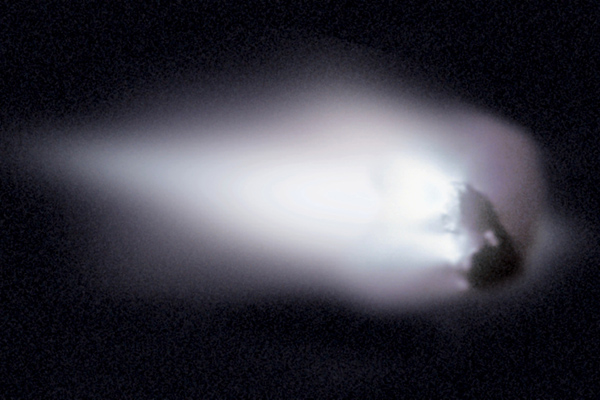 Image of Halley's Comet, taken by Giotto Spacecraft / nasa.gov
Image of Halley's Comet, taken by Giotto Spacecraft / nasa.govGiotto did a flyby of Halley's comet on March 14, 1986, at 596 km (370 miles) making it the first man-made spacecraft to approach a comet at such a close distance. It sent back amazing images of the comet's nucleus as well as other images of its coma and tail. Surprisingly the spacecraft survived its encounter despite being knocked off its axis by debris from the comet for about 32 minutes and losing ones of its cameras.
During Halley's approach in 1986, spacecraft Vega 1 and Vega 2 redirected to intercept Halley as it came within range. Both ships reach within 8,890 km (5,523 miles) and sent back over 1,500 images of the comet.
Video Gallery

-
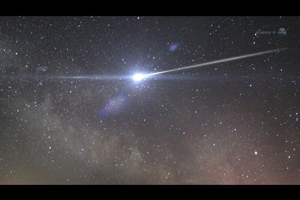 ScienceCasts: A Meteor Shower from Halley's Comet
ScienceCasts: A Meteor Shower from Halley's Comet
-
 Microbes From Space and Bits of Halley's Comet
Microbes From Space and Bits of Halley's Comet
-
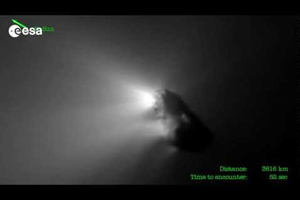 Giotto: Halley's Comet Flyby Animation
Giotto: Halley's Comet Flyby Animation